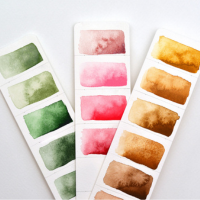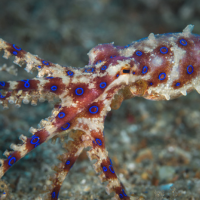1st June 2023
Colour
Welcome to the first day of International Nature Journaling Week 2023.
Today will be a celebration of colour in the natural world!
Colour plays a vital role in our emotional and aesthetic responses to our environment. We are naturally drawn to vibrant and contrasting colours, such as the bright green of new leaves, the vivid colours of flowers, and the deep blues and greens of the ocean. We also find a sense of place by connecting with the colours of the landscape where we live.
Live event
*You can use a timezone converter to check the workshop time in your area.
1st June, 12 noon Germany (CEST);
8pm Brisbane (AEST)
Verena Hillgärtner & Bethan Burton -
Colours Across Continents
Nature journaling prompts and ideas
Colour is used in nature for many different reasons. An organism may use colour to blend in, for example using camouflage for protection, or to stand out, in the case of a mating display in certain birds. Can you find ways that organisms are using colour to their advantage in the natural spaces near you?
Colors of Nature is a project that explores the intersection of art and science through colour. On the website you will find activities exploring core practices in science and art, as well as art and chemistry, art and biology, and art and optics.
Colours in nature change throughout the year. You might live in a place that experiences a dramatic change in the colour of foliage during the autumn, or a burst of colour during springtime. In other parts of the world, the seasonal changes cannot be contained within the model of four seasons. For example, in the south-west of Western Australia, the traditional custodians of the land, the Noongar people, divide the year into six seasons relating to the timing of changes in rainfall and temperature, and the availability of animals and plants for food. During each of these seasons, different colours that are present in the landscape. You can watch this video to learn more about the Noongar 6 seasons. Do you notice changes in the colour of your landscape throughout the year? How could you observe and record these changes in your nature journal?
Watercolour is a useful medium for nature journalers. It is portable and can help us express our observations of colour while journaling in the field. Swatching out our colours is an important exercise for getting to know our palettes and what mixes we can create with the colours we have.
Jane Blundell is an Australian artist with a passion for colour. Her blog is a great resource for artists and art enthusiasts looking to learn more about watercolour techniques, pigments, and materials.
The colour of the Earth from space is a breathtaking sight, showing the diversity and beauty of our planet's oceans, forests, deserts and clouds. Have you ever tried nature journaling our earth from a photograph? This exercise can help us remember the preciousness of our planet.
This video, from the Astronomic YouTube channel, gives a wonderful summary of all the colours of the planets in our solar system.
Did you know that we can use technology to allow us to explore, and nature journal, on other planets? Artist and explorer, Roseann Hanson, led a virtual field trip to Mars! You can go on the adventure with Roseann using this link: "Virtual Field Trip: Let's Explore Mars".
Flowers use colour in several ways, including attracting pollinators, defending against herbivores and predators, and adapting to their environment. Do you have flowers growing near you? What colours are they? What do you think could be the evolutionary reasons for these colours? How could you represent these colours and questions in your nature journal?
Naturalist David Lukas has created a series of videos on his YouTube channel to explore and celebrate the beautiful wildflowers of the Methow Valley. Watch his videos to learn more about the ways that flowers adapt to their environment and interact with other organisms around them.
The ability to change their colour can be a crucial adaptation for some animals. This article by National Geographic explores the phenomenon of how some animals change their skin, fur or feathers to blend into their surroundings, attract mates, or communicate with others. Can you see, and nature journal, any examples of colour change in your nearby nature?







